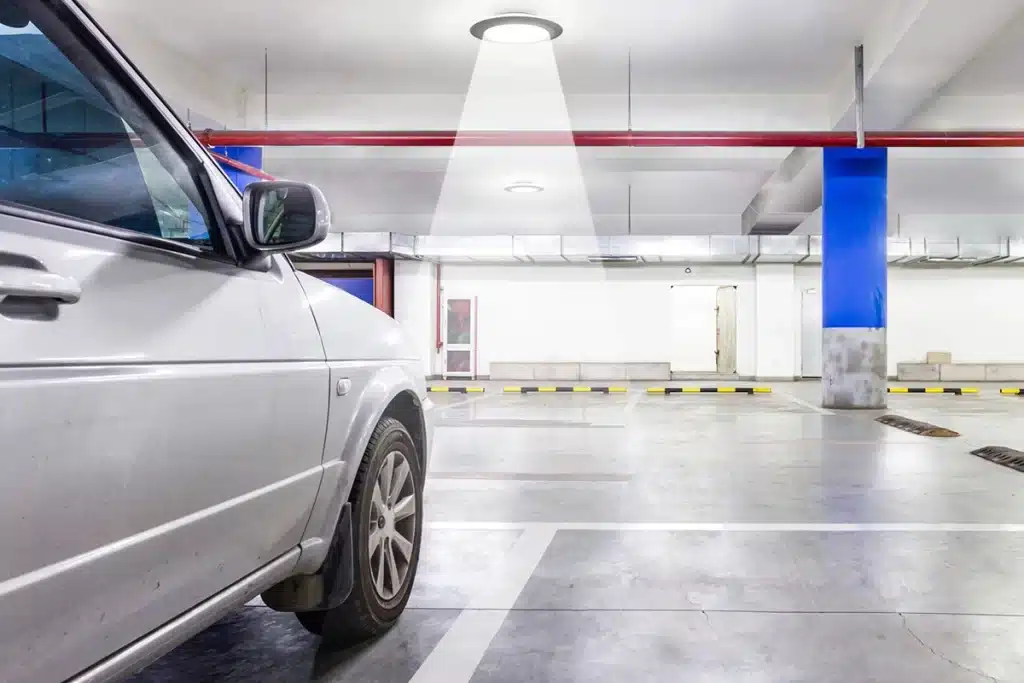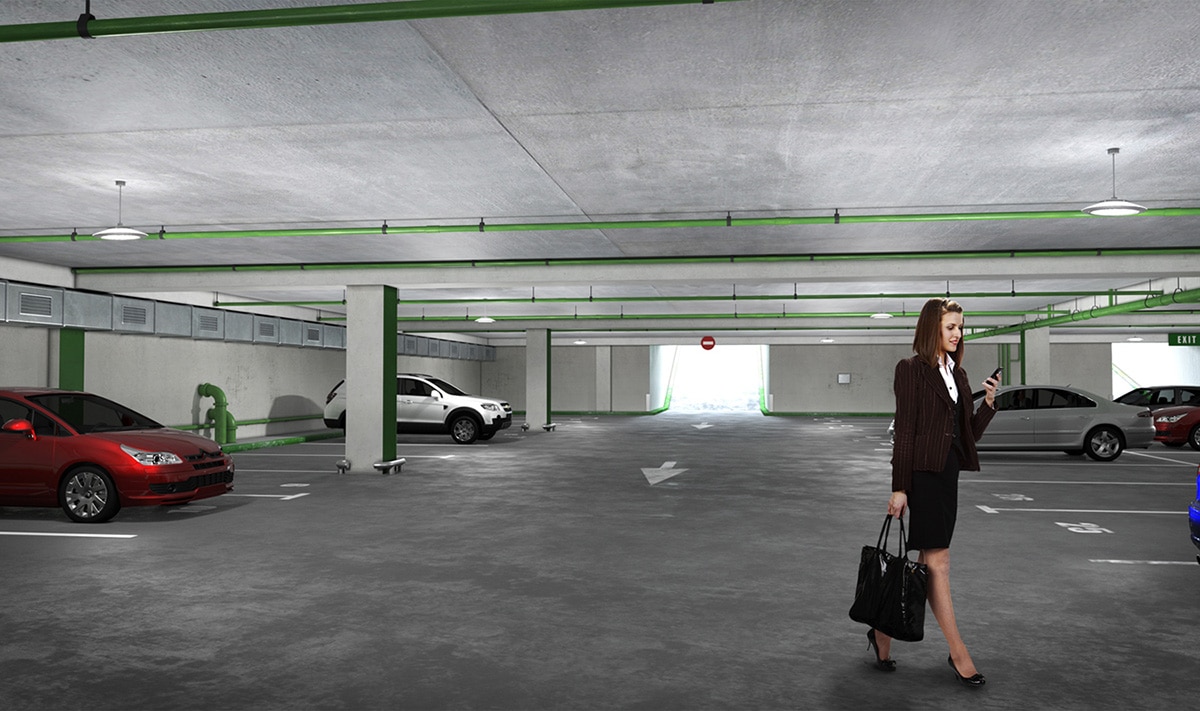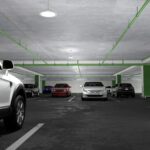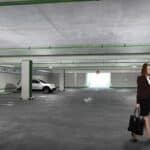
Illuminating the Path to Greener Parking
How to Leverage LED & Connected Lighting to Support Your Sustainability Goals
‘SUSTAINABILITY’ is not just a buzzword or a passing fad. It is a critical area for action to ensure a better future for the environment and society. The parking sector has already started to lead here (take the Parksmart certification program, for instance), and with good reason. According to The Climate Group, 40% of global greenhouse gas (GHG) emissions come from buildings and, if left unchecked, they’re set to double by 2050. These buildings include parking garages and other buildings served by parking lots and on-street curbside parking.
Parking owners and administrators must increasingly look for opportunities to drive energy efficiency and reduce their carbon footprint to support the sustainability imperative. One of the easiest ways to achieve this: upgrade to LED lighting.
When paired with innovative sensor technology and software systems, connected LED lighting can help you make significant energy-efficiency gains and reduce your environmental impact. It can also help you comply with the latest building and energy code criteria, reduce your operating costs, and support a better customer experience. The possibilities are bright for your business and the planet if you put the focus here.
Table of Contents
The First (Simple) Step in Transforming Your Parking Infrastructure
An LED lighting retrofit is one of the least intrusive elements of a building or parking infrastructure renovation that can quickly drive energy savings. Say you have a multi-level parking garage. If you upgrade one traditional 100-watt (W) Pulse Start Metal Halide (PSMH) luminaire that consumes 129W total to an LED luminaire that only consumes 52W, you achieve 60% energy savings for that luminaire, plus improved lighting performance. If your parking garage has 500 luminaires, then by replacing all of them, you would reduce your energy consumption by a total of 38.5kW. Garages can be lit 24/7/365 for safety reasons and to appear well-lit and inviting; if that were the case using this example, a total of 337,260kWhr would be saved annually.
In this LED upgrade scenario, this energy savings data is approximately equivalent to 239 metric tons of CO2 according to the United States Environmental Protection Agency (EPA) GHG equivalencies calculator. That translates into a significant annual reduction of your carbon footprint.
LED luminaires also offer longer lifetimes due to higher lumen maintenance than traditional HID luminaires. Being digital, LEDs are either on or off, and when they are off (or dimmed) their life is extended. Eliminating HID lamp replacements and ensuring fewer LED luminaire replacements means less waste.

By optimizing your existing parking facility with an LED retrofit versus building new, you can also defer new capital outlay investments while taking ‘greener’ steps. Constructing new garages or parking lots can incur increased energy expenditures and carbon emissions. This cost avoidance compounds your savings further, reducing your payback even more while further reducing your carbon footprint.
Improve Your Lighting and Reap the Benefits
There are more benefits to consider when weighing the decision to switch to LED lighting. Omnidirectional HID lamps require reflectors and refractors to corral the light and bend it to where it is needed, which results in efficiency loss. Conversely, LED luminaires use precision optics with optical grade lenses specifically designed to leverage that directionality, resulting in less initial light expenditure to achieve improved performance. Hence, LED luminaires require lower lumens and wattage compared to traditional HID luminaires. Figure 1 offers a plan view or “bird’s eye” view comparing the 52W LED luminaire (left) to the HID 100W PSMH luminaire (right). Notice how the LED luminaire provides more even, circular illumination versus the patchy, uneven HID luminaire—particularly at the higher footcandle (fc) value per the magenta line in the middle. This illumination is directly underneath the luminaire; for the HID (right), it appears disjointed resulting in puddles of non-uniform light. The LED luminaire also provides more illumination (right, as shown with the black and red fc isolines extending out further) with fewer watts (52W vs. 129W) and lower total lumens (5,994 vs. 7,307), saving energy and using less initial light.
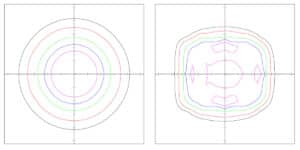
In parking garages and parking lots, few things impair a driver’s vision more than bright, glaring hot spots and dim, dark areas, causing them to shift their eyes from where they should be. Luminaires with LEDs distributed evenly around the entire perimeter of the luminous opening (symmetric distributions) provide improved, even illumination without the harsh, sharp maximum candela value that occurs with HID lamps due to their arc tube. The result is better-performing optics with more uniform illumination, both horizontally on the driving/parking area and vertically on pedestrians and structures, without distracting, harsh maximum to minimum transitions.
Figure 2 offers another comparison of the LED and HID luminaires. Note the smoother, more robust blue vertical pattern of the LED luminaire (left) versus the narrower, sharp, jagged blue HID pattern (right). These blue lines represent the illumination you would see projecting downward when viewed from the side of the luminaire. The sharpness creates a distracting bright hot spot. Also note the smoother, circular red horizontal pattern of the LED luminaire (left) versus the jagged red HID pattern (right). This is the illumination you’d see on the parking garage floor. Thus, you can see that LED luminaires provide broader coverage and better uniformity for improved driver visibility.
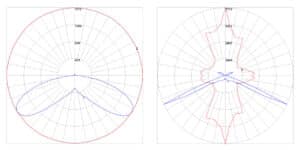
Mitigating glare is also important in parking settings. Glare causes annoyance, discomfort, and even loss of visibility for drivers and pedestrians alike, which can lead to potential safety issues. Consider the graphs in Figure 3. The LED luminaire (left) projects most of its light in the lower 30 to 60-degree zone, where it ought to be to best illuminate the parking garage floor. Compare to the HID luminaire (right) with most of its light in the higher 60 to 80-degree zone; ANSI/IES RP-8 defines 75 to 90 degrees as the “glare zone,” which you want to avoid.
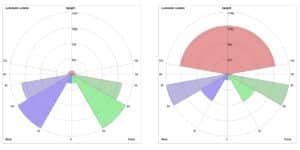
One last consideration: Lighting parking garages—especially those with subterranean decks—is unique. A “cave effect” can often occur when the garage ceiling is not sufficiently illuminated or at worst is pitch black; it causes drivers and pedestrians to feel as though the parking structure is closing in on them. On the other hand, some may experience the limitless “infinite ceiling” feeling when they are unable to see the ceiling. To mitigate this, specify LED luminaires that provide uplight as shown by the red portion above 90 degrees in Figure 3 (but not too much uplight, which is wasted as shown on the HID image to the right).
An LED lighting retrofit provides the right amount of illumination in the right places to enhance customers’ visual acuity and contribute to their sense of comfort and safety when using your parking facility—all without sacrificing lumens and efficiency.
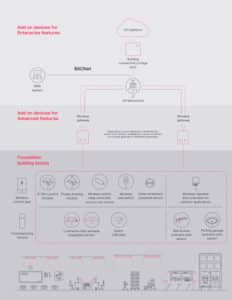
Up the Ante with Smart Controls and Connectivity
The benefits of LED lighting are even brighter when you use lighting controls and sensor technology. Parking owners and administrators can use cloud-based software to remotely monitor, manage, and control a parking facility’s lighting, or even an entire network of facilities at once for a sustainable property portfolio.
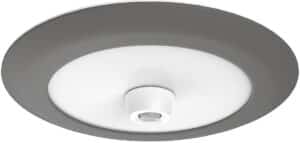
Sensors can also be used for daylight harvesting. They can detect the natural light found around the perimeter of your parking garage or in open-air top decks, lots or curbside, or from other nearby sources of artificial light to help you keep your electrical load and carbon footprint to a minimum. This ranges from leveraging the daylight contribution and automatically dimming your lights to maintain your desired overall illumination level, to using sunlight and other ambient lighting to automatically turn off your lights altogether when artificial illumination is not needed.
Smart lighting controls like these can also go a long way in helping you comply with the latest energy codes such as ANSI/ASHRAE 90.1 Energy Standard for Buildings, the IECC International Energy Conservation Code, and the CEC California Energy Code’s Building Energy Efficiency Standards—Title 24.
On top of that, upgrading to a connected lighting system can help you collect points towards achieving or maintaining green building or parking garage certifications, such as LEED’s Light Pollution Reduction and Energy Performance, or Parksmart’s Lighting Controls and Energy Efficient Lighting System.
Drive the Shift to Sustainability
A greener future is ahead of us, and the parking and mobility industry is well-positioned to help steer the course. LED and connected lighting can help illuminate your journey. These solutions make it easy to generate energy savings, reduce costs and unlock even more benefits beyond delivering light itself to enhance the parking experience for your customers and help support your sustainability goals. ◆
Mike Riebling is Product Manager Garage & Canopy, Floodlights and Sports for Gardco by Signify.
-
Mike Rieblinghttps://parking-mobility-magazine.org/author/mike-riebling/February 23, 2023
-
Mike Rieblinghttps://parking-mobility-magazine.org/author/mike-riebling/March 28, 2023


Parking on Plastic
A New Frontier in Sustainability

Rethinking Parking Facility Design
How Electric Cars are Changing the Architecture of Parking.


